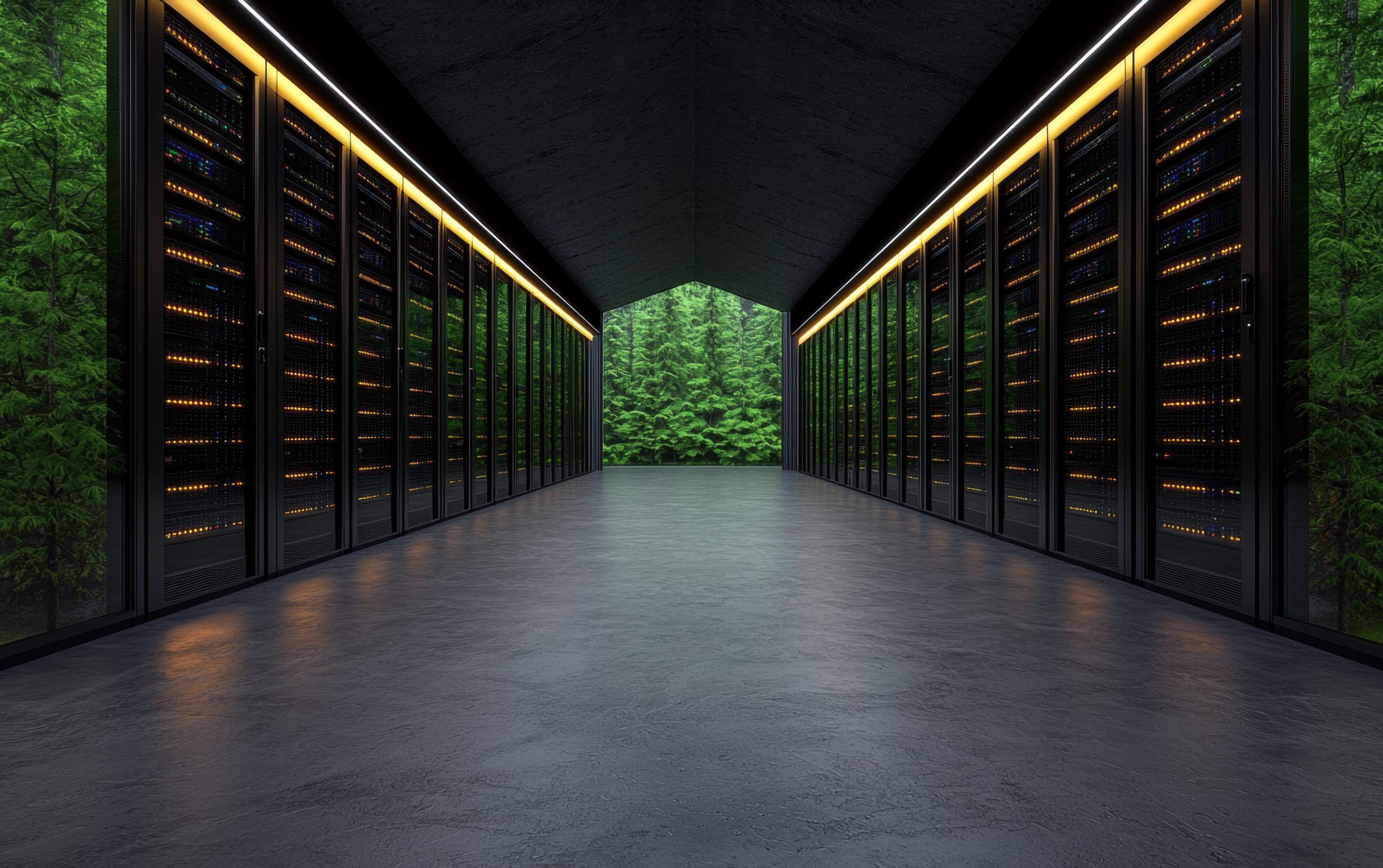
25 Apr The importance of sustainable design in new data centres
In the midst of the digital transformation era, artificial intelligence, and the Internet of Things, the demand for data processing and storage is growing exponentially. At the heart of this revolution are data centres, critical infrastructures that, however, consume vast amounts of energy. In light of this, sustainability has ceased to be an option and has become an imperative in the design and operation of these centres.
Building and managing sustainable data centres is not just an environmental responsibility; it is also a smart strategy that directly impacts operational efficiency and long-term viability. For service providers and operators that rely on these facilities, understanding the keys to sustainable design is essential.
The foundations of efficiency: architecture and design
Sustainability starts at the design table. The architecture of new data centres focuses on optimising every square metre and every watt of energy consumed. This includes everything from building orientation to take advantage of climatic conditions to using construction materials with a low environmental impact and high insulation. Implementing modular designs allows for efficient infrastructure scaling, adapting to demand without over-sizing and wasting energy resources from the outset. Intelligent airflow management, through the separation of hot and cold aisles, is already a standard practice to minimise the load on cooling systems.
On the other hand, one of the biggest energy consumers in a data centre comes from the cooling systems needed to keep equipment operating at optimal temperatures. Innovation in this field is crucial for sustainability. There are already quite energy-efficient alternatives, such as free cooling, which takes advantage of cold outside air, liquid cooling—either directly to the chip or through immersion—and adiabatic or evaporative cooling systems, which offer much more efficient alternatives than traditional air conditioning systems, despite the high water consumption of the latter, for example. These technologies not only drastically reduce electricity consumption but also allow for a higher density of equipment.
There will be no sustainable data centres without green energy
Commitment to sustainability inevitably involves the source of energy. The most advanced data centres are migrating towards the massive use of renewable energy. This is achieved by installing on-site solar panels, entering into long-term Power Purchase Agreements (PPAs) with wind or solar energy producers, or acquiring renewable energy certificates. The goal is to reduce the carbon footprint and move towards a carbon-neutral operation.
Certifications: a guarantee of sustainable commitment
To validate sustainable practices, internationally recognised certifications exist. Standards such as LEED (Leadership in Energy and Environmental Design) assess the overall sustainability of the building, while regulations such as ISO 14001 (Environmental Management) or ISO 50001 (Energy Management) certify operational processes. Obtaining these certifications not only demonstrates a real commitment but also offers guarantees to clients and partners about the efficiency and responsibility of the data centre.
What is the aim of all these efforts and strategies? The pursuit of net-zero emissions data centre models. This involves a combination of maximum energy efficiency, exclusive use of renewables, and, in some cases, carbon capture technologies or emissions offsetting.
The impact on telecommunications networks is direct. A data centre designed with sustainability principles is inherently more efficient and resilient. Better thermal management reduces hardware failures, ensuring higher availability. Lower energy consumption can translate into more predictable operational costs. Additionally, for operators and service providers, partnering with companies whose data centres are sustainable strengthens their own brand image and meets the growing demands for corporate responsibility from their customers.

